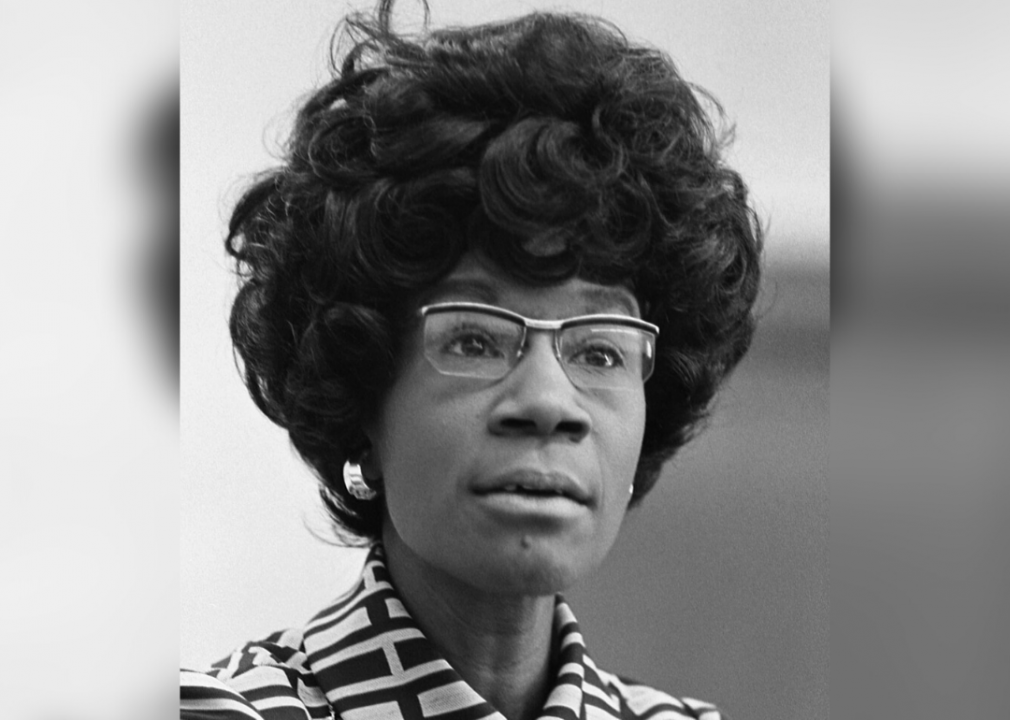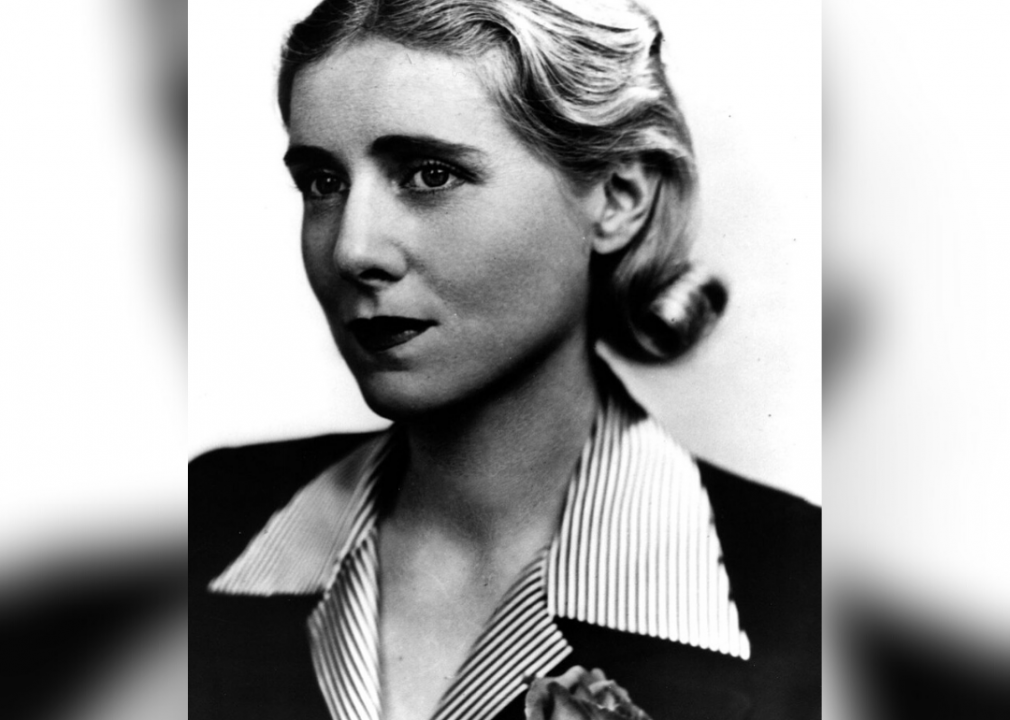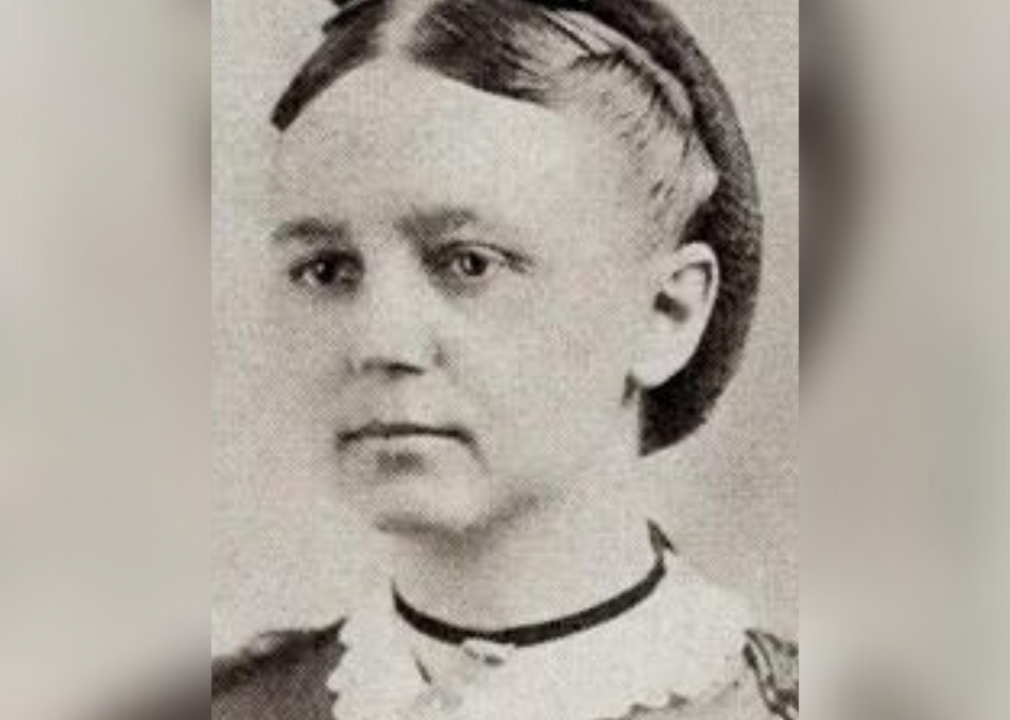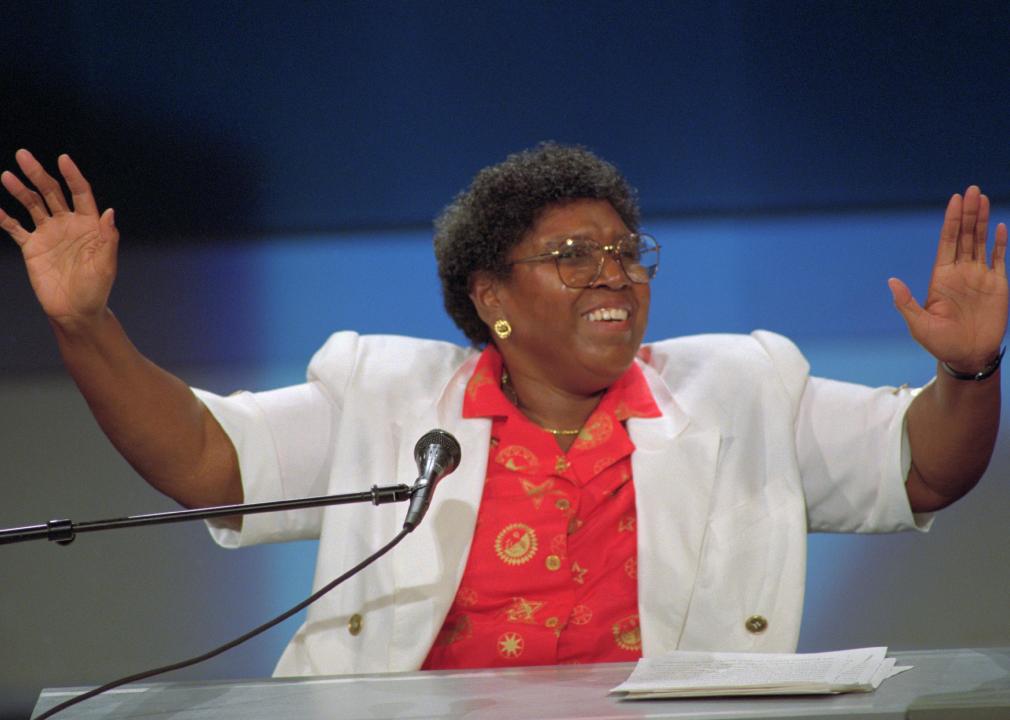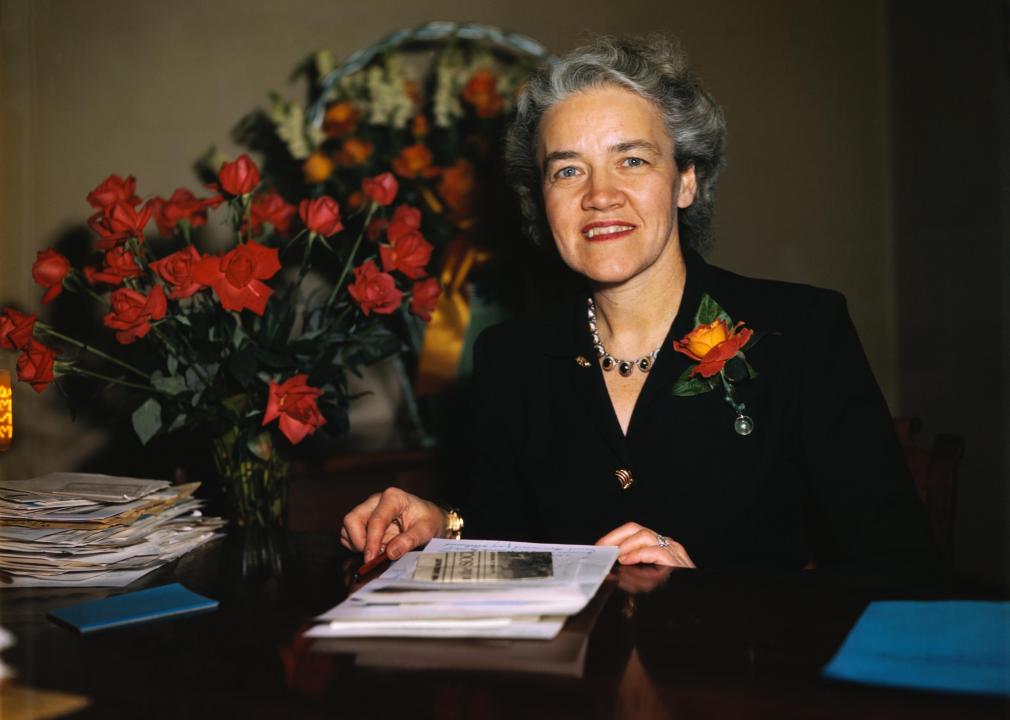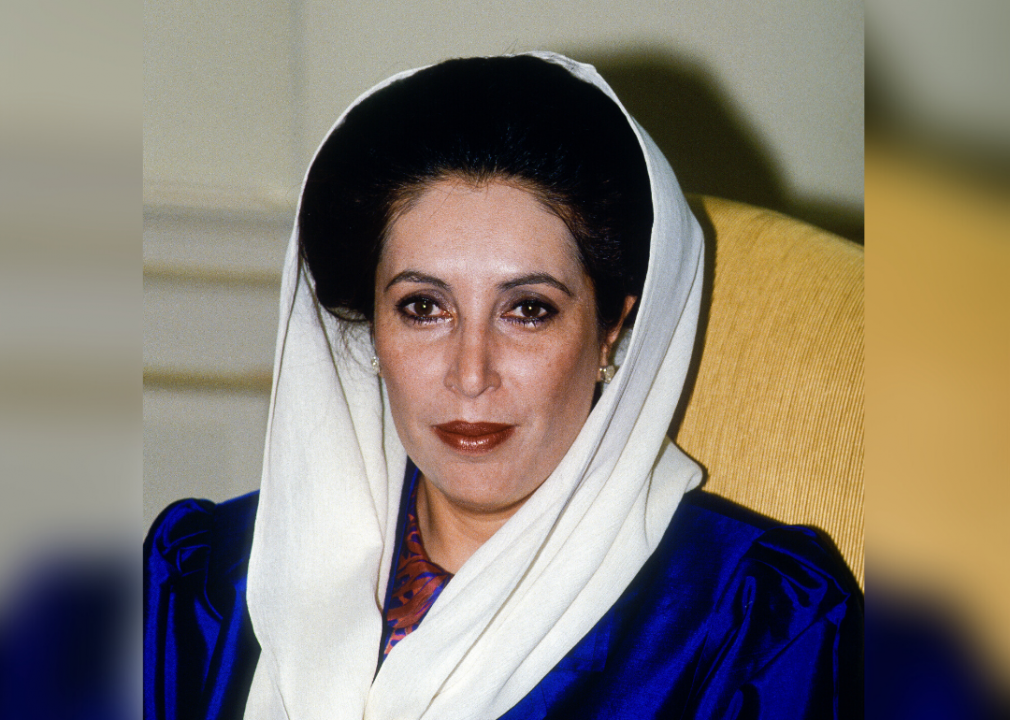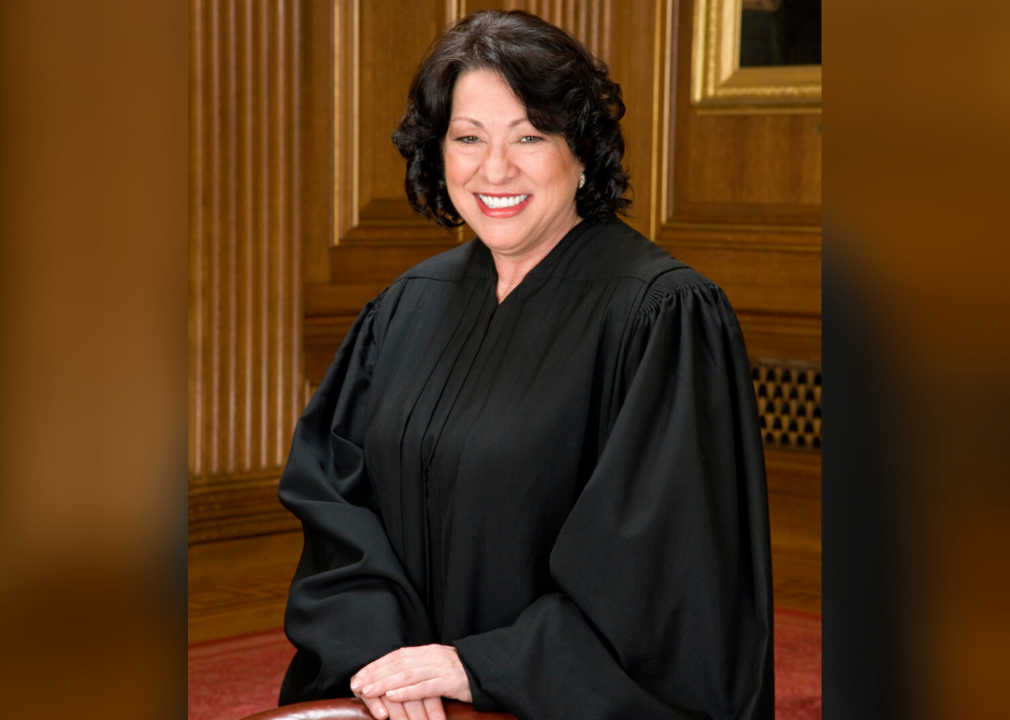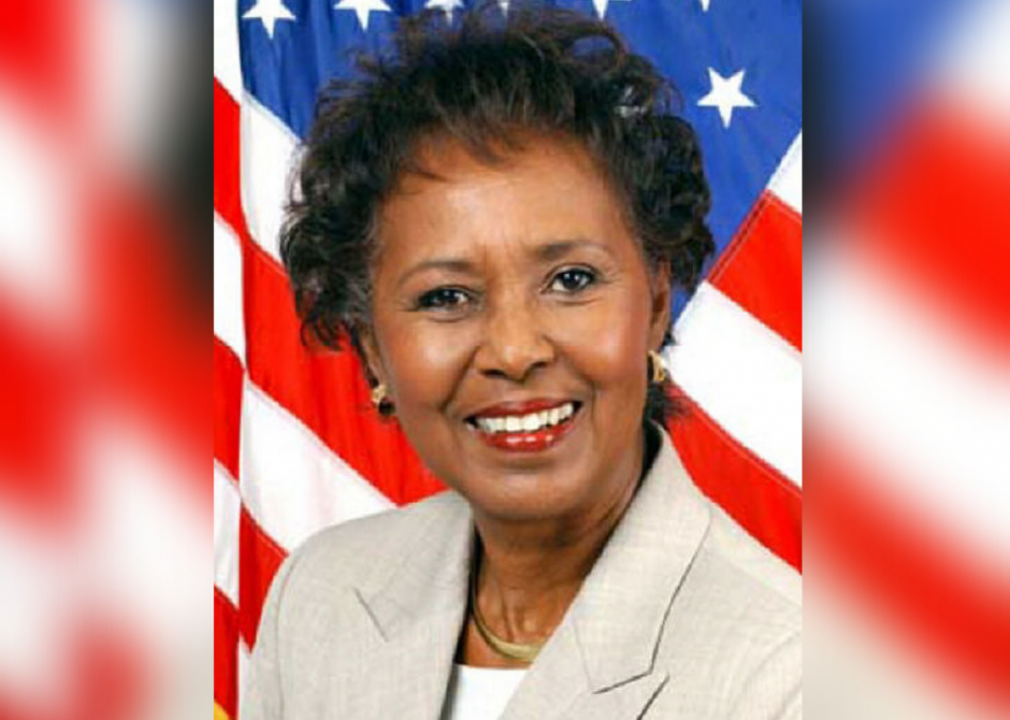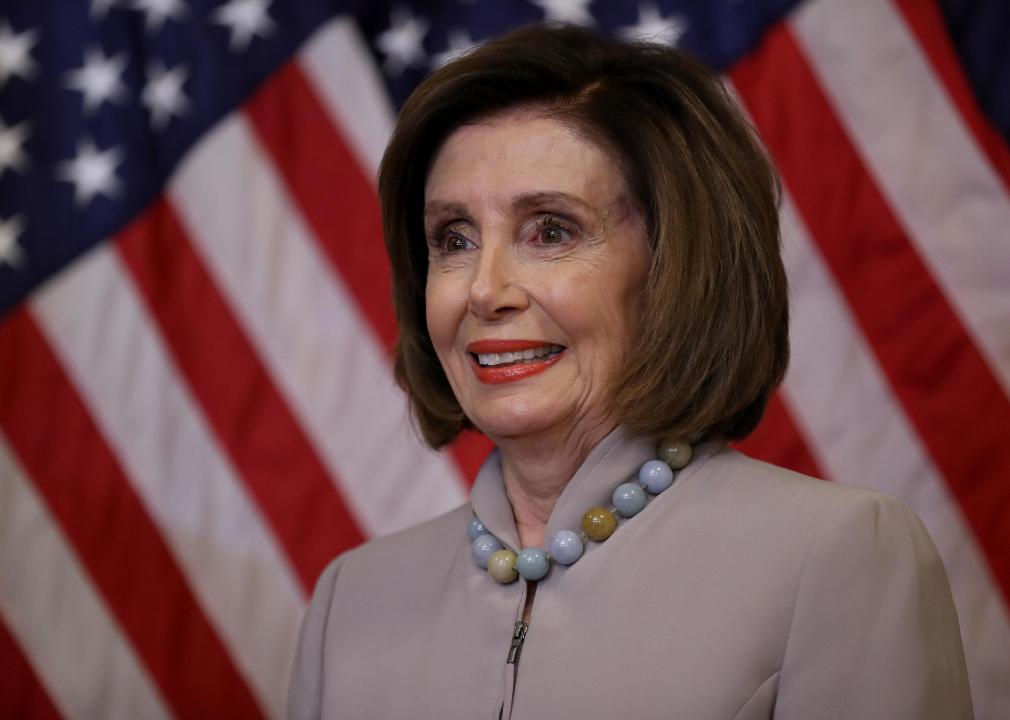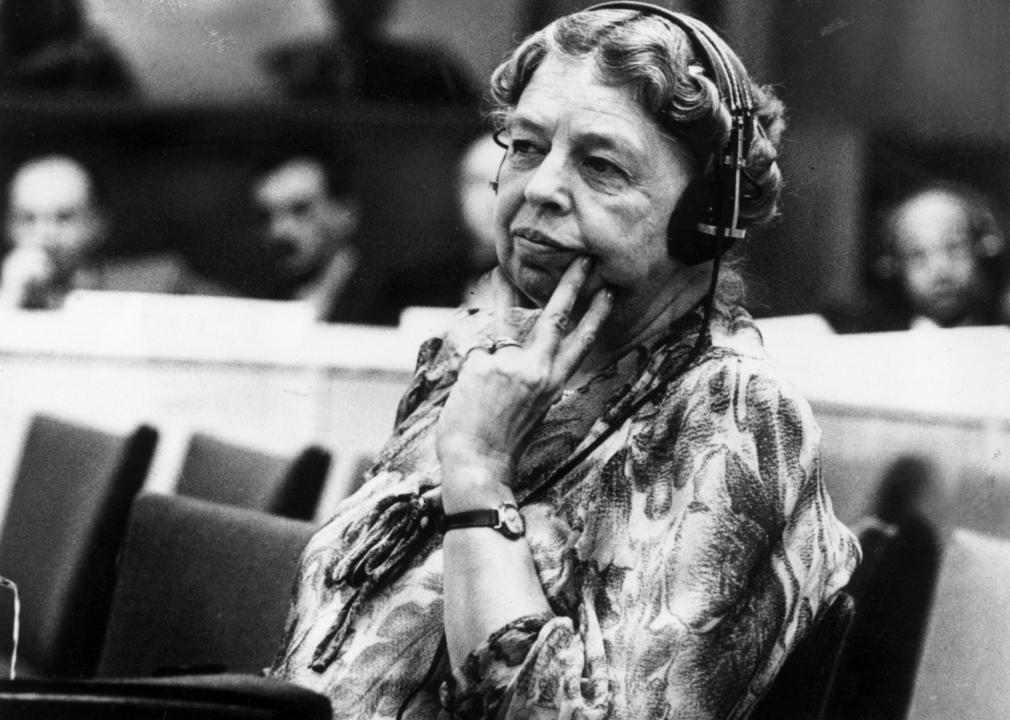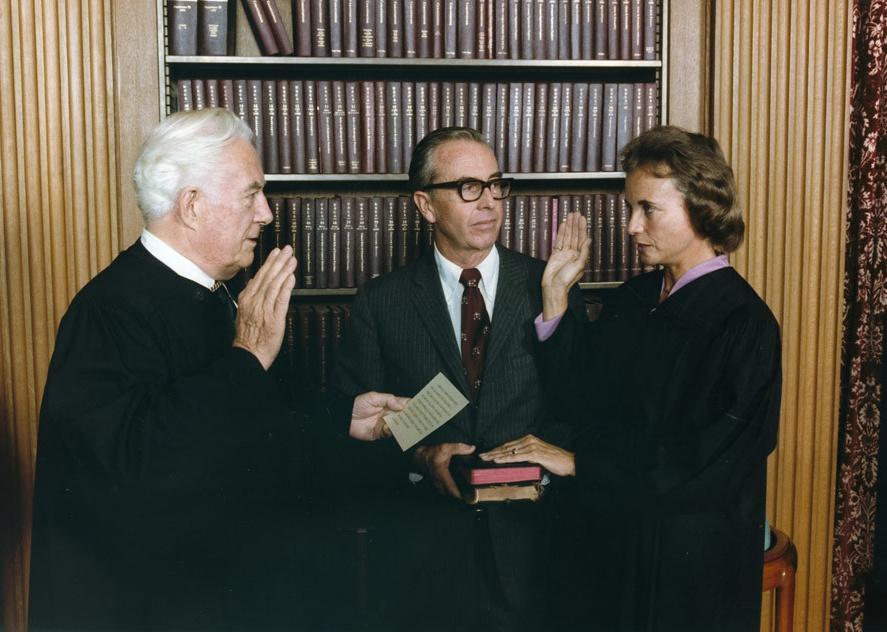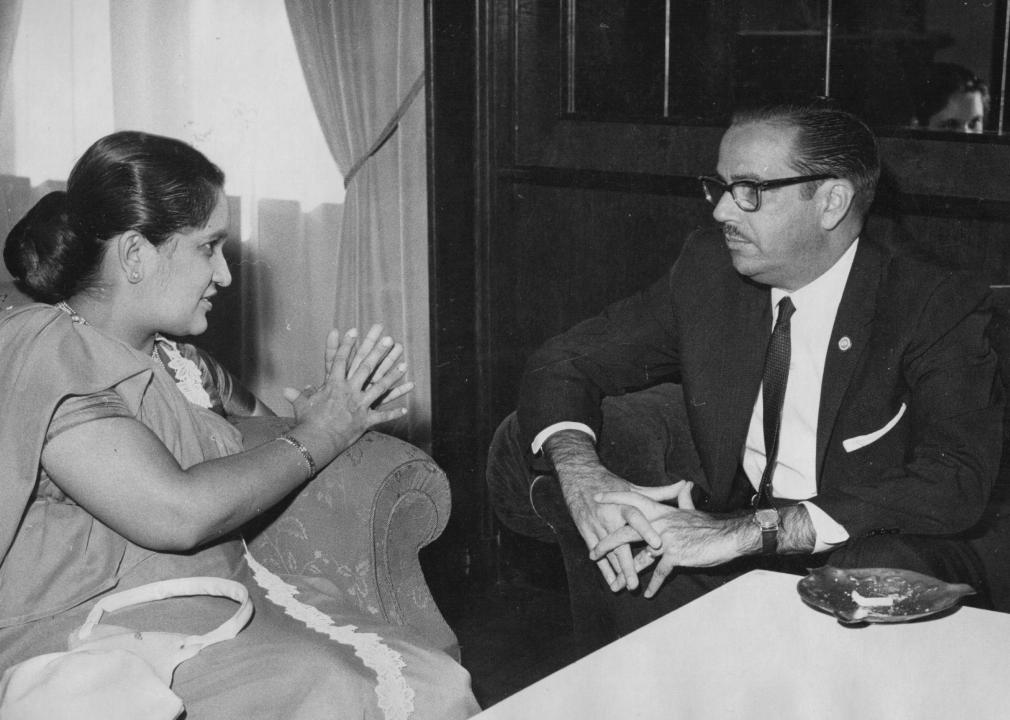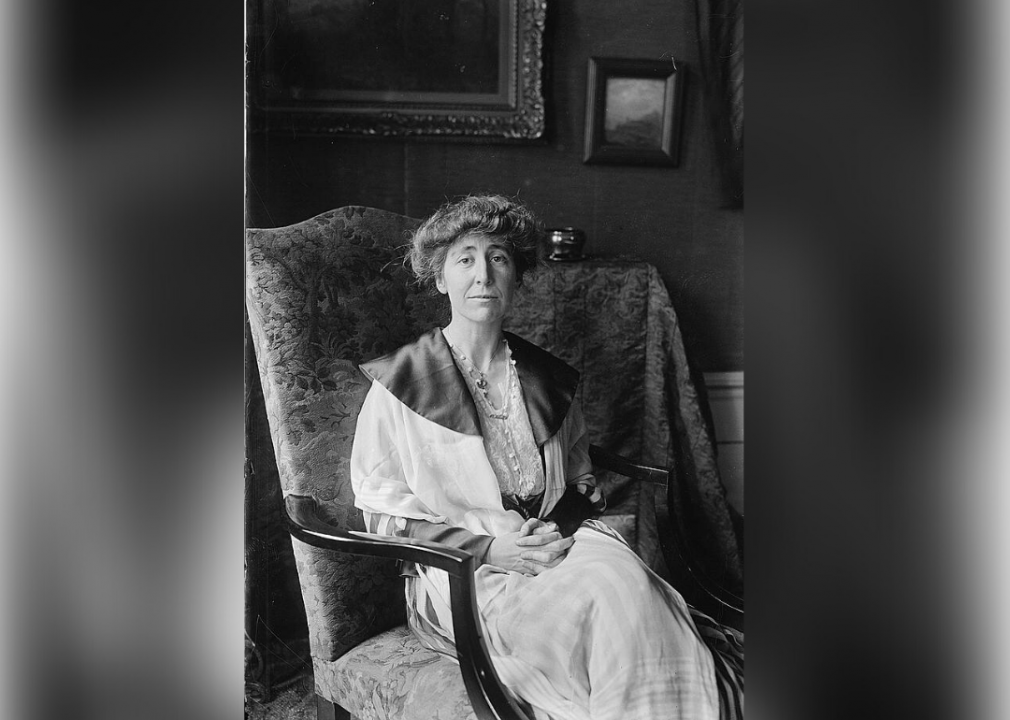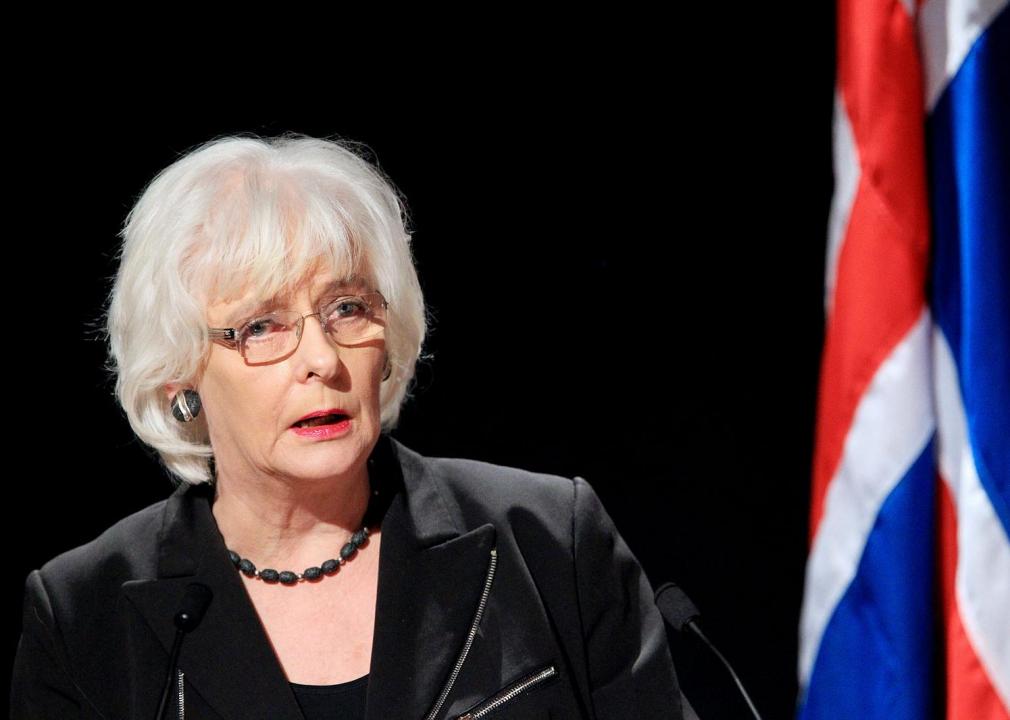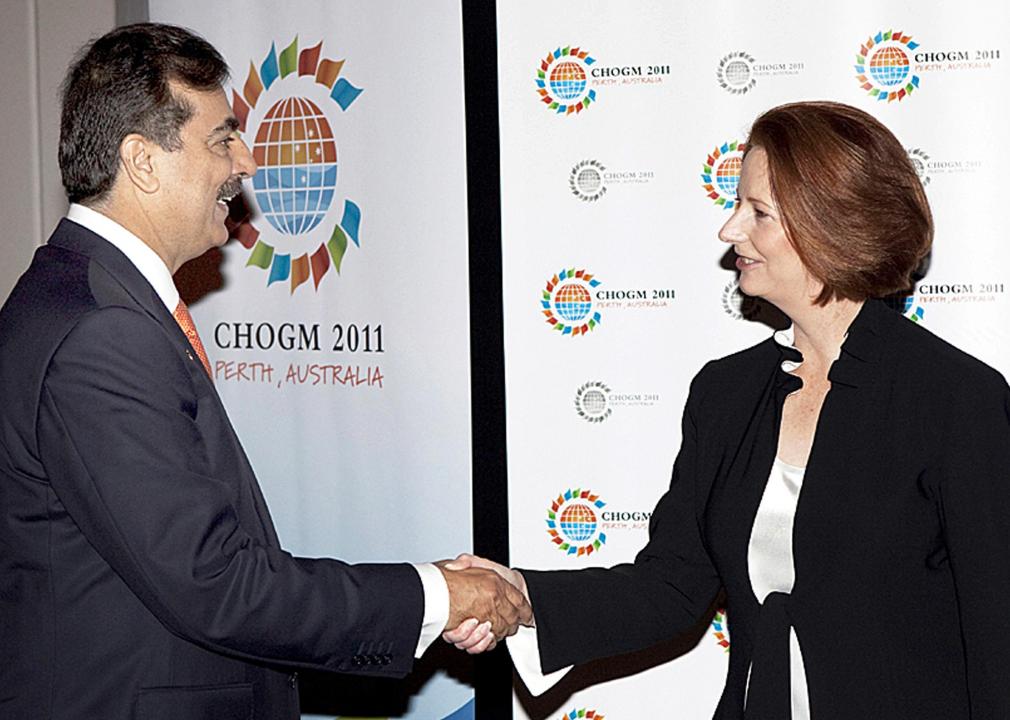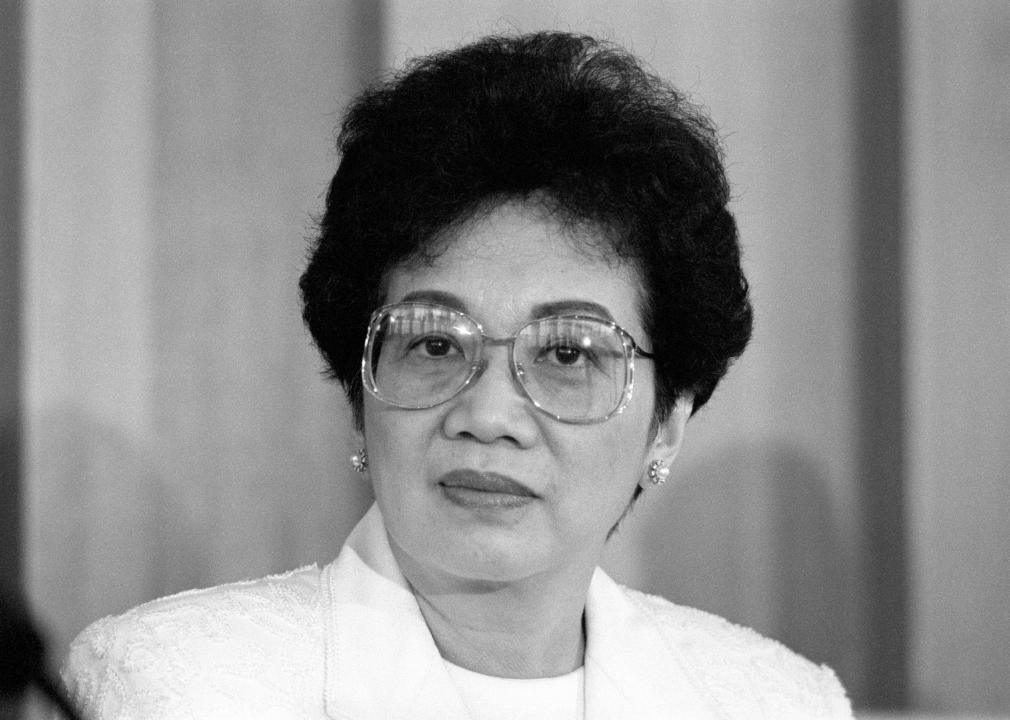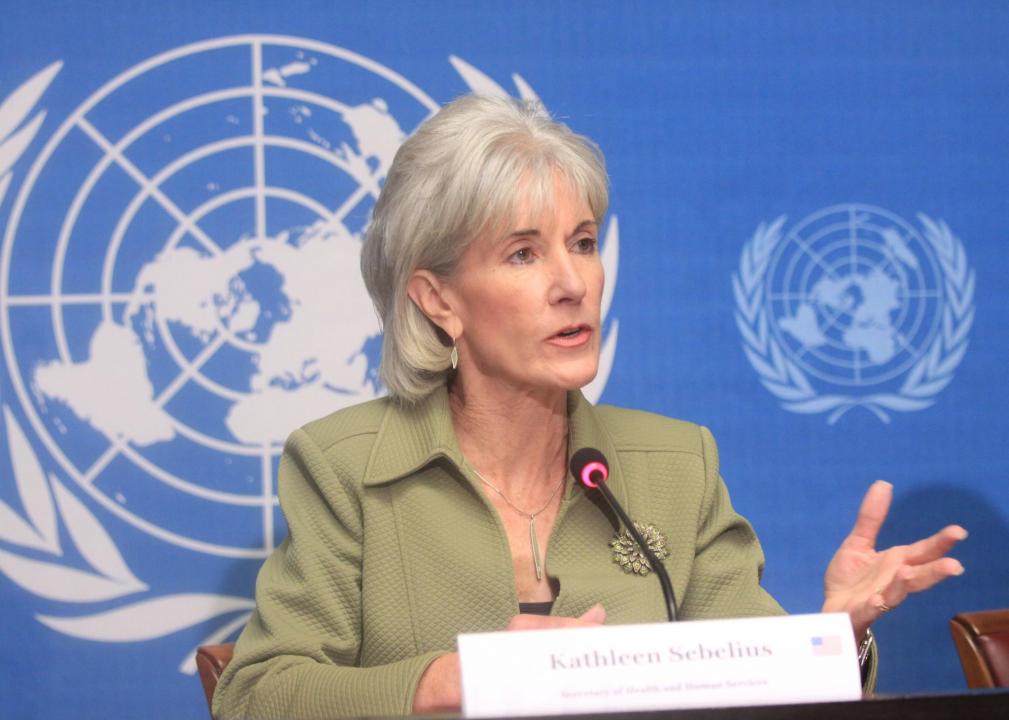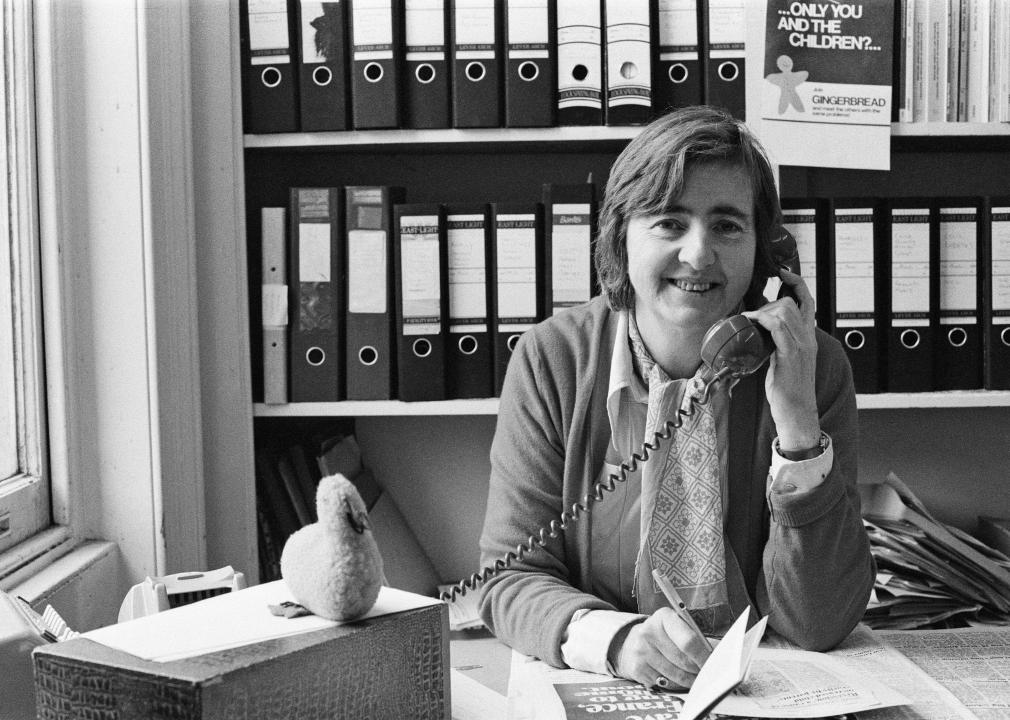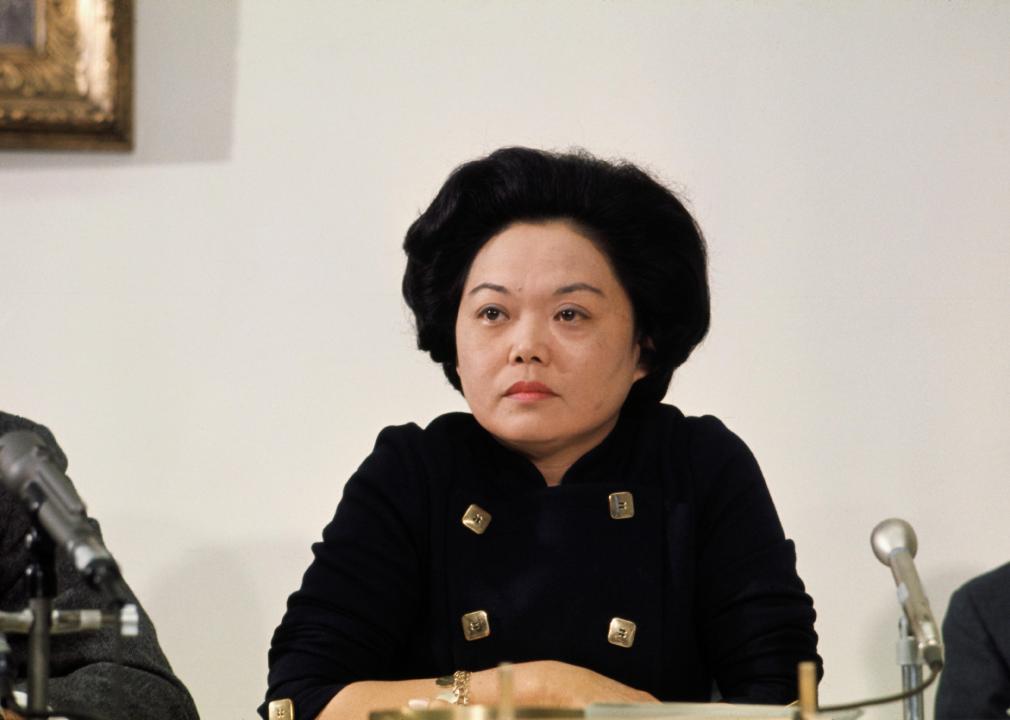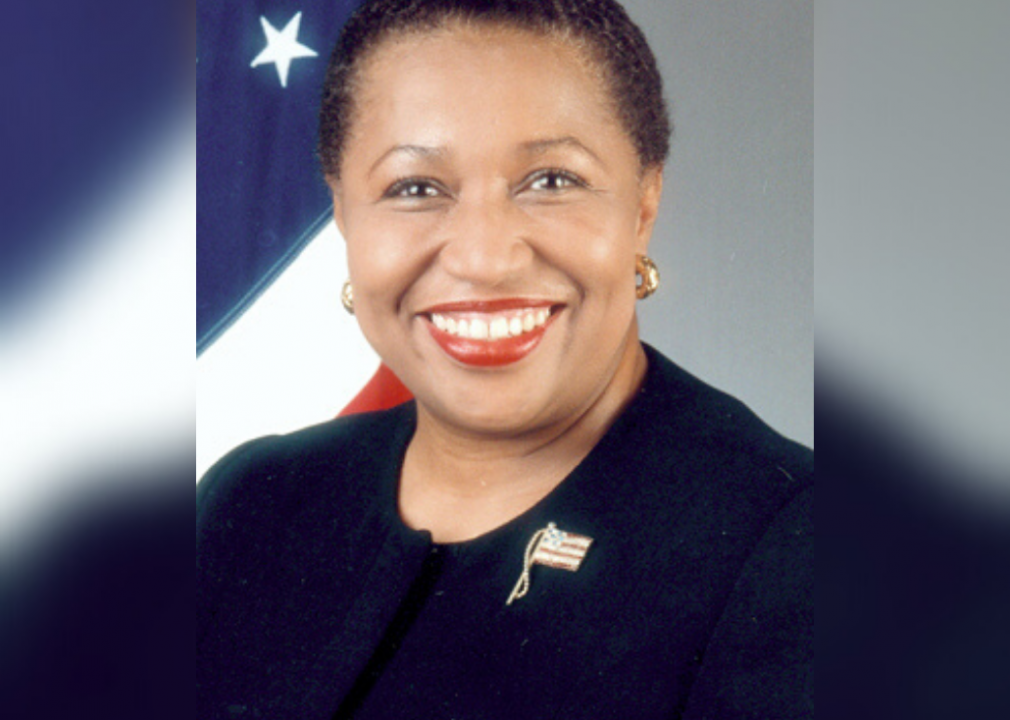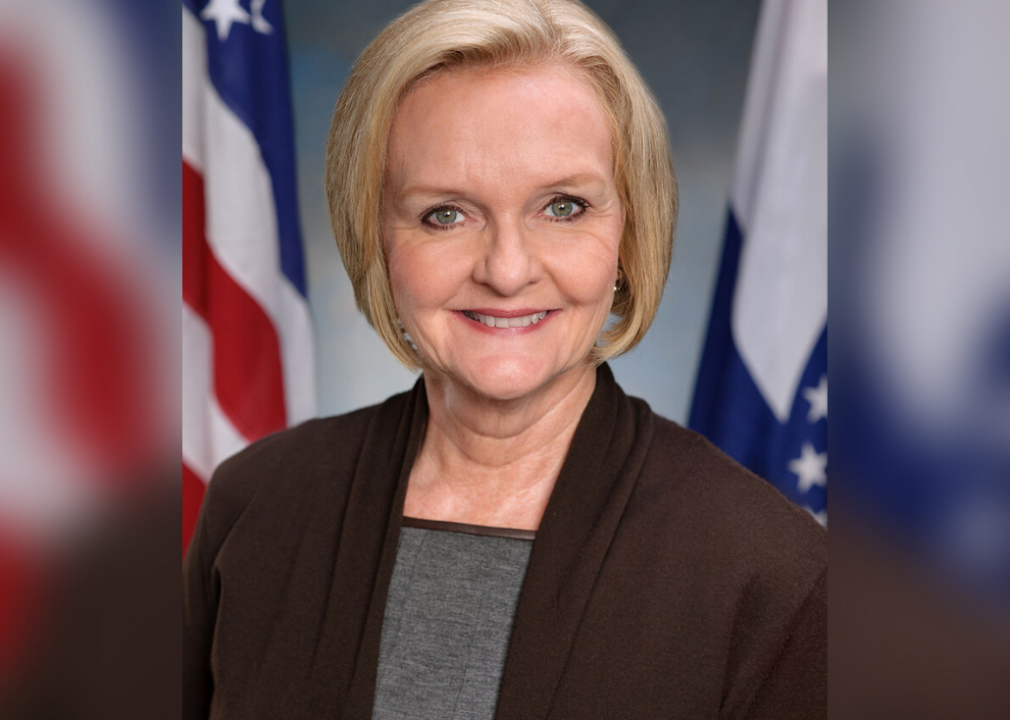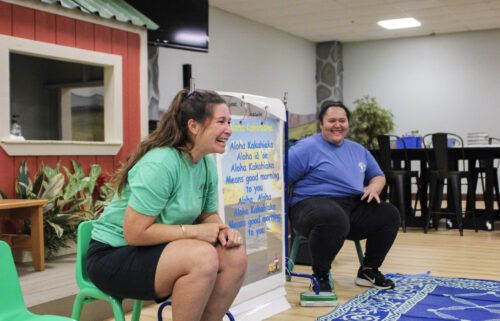Women politicians who broke barriers
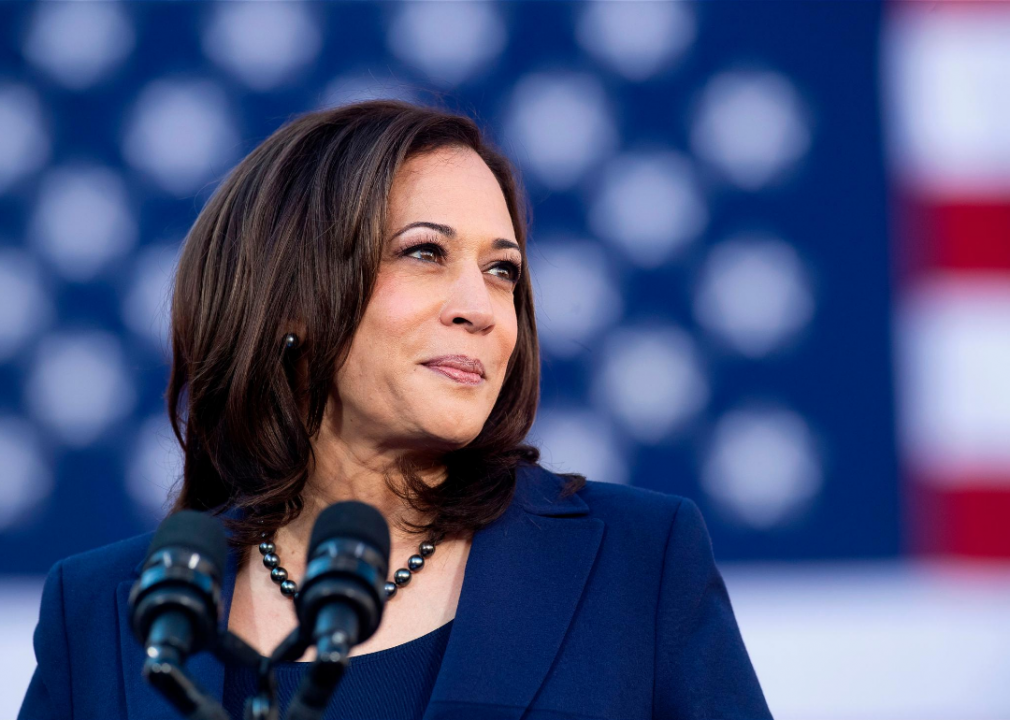
NOAH BERGER/AFP via Getty Images
Women politicians who broke barriers
Politics is an umbrella term for a set of systems structured to master decision-making on behalf of an entire country or specific entity. Over the years, many politicians have aspired to overcome colossal hurdles and break barriers; women politicians, in particular, have faced an arduous battle.
Stacker looked through history books, transcripts on women leaders, and news archives to gather a list of 29 women whose intricate paths paved the way for reform and more privileges most contemporary women benefit from today.
Whether domestically or abroad, women in politics have come to prove their roles are pivotal for equality and social justice in their wider communities. Their cumulative fight for human rights and democracy, however, was not often celebrated by the other half of society. But if history tells us anything, it’s that women did not break the glass ceiling by following legal and moral codes outlined solely by men.
Late American politician and trailblazer Shirley Chisholm echoed the above sentiment best by saying, “If they don’t give you a seat at the table, bring a folding chair.” Following that way of thinking, countless women managed to make their marks on history in spite of American culture favoring men and their contributions.
You may also like: Milestones in women’s history from the year you were born
![]()
Horacio Villalobos – Corbis/Corbis // Getty Images
Madeleine Albright
A Czech refugee, Madeleine Albright received unanimous endorsement from Congress after she was named the United States secretary of state by former President Bill Clinton in 1997, making her the first woman to hold that post. Albright’s work lives on to this day, from supporting the NATO-led military intervention in Kosovo to her positive stance on the endorsement of the Kyoto Protocol on Global Climate Change.
[Pictured: Former United States Secretary of State Madeleine Albright at “Challenges to Open Democracies” on May 31, 2017, in Estoril, Portugal.]

Unknown // Flickr
Frances Perkins
Born in 1882, Francis Perkins was head of the New York Consumers’ League before she set a precedent for all women and became the first to hold a Cabinet position as the U.S. secretary of labor, only 13 years after women were granted the right to vote. Perkins was appointed by Franklin Roosevelt and served for 12 years, the longest by a labor minister. One of her many achievements includes playing a role in ratifying the Social Security Act in 1935 to help retired, injured, and unemployed workers.
[Pictured: David Dubinsky and Frances Perkins.]
Thomas J. O’Halloran // Wikimedia Commons
Shirley Chisholm
The many barriers Shirley Chisholm broke cannot be counted on one hand. Not only was she the first Black woman to be elected to the U.S. Congress in 1968, but the outspoken educator and activist was also the first African American to be nominated as a presidential candidate by a major party and first woman to run for the Democratic nomination in 1972.
National Archives and Records Administration // Wikimedia Commons
Clare Boothe Luce
Born Ann Clare Boothe, the famed writer was revered by both political parties in the United States. She truly pushed the envelope when she was appointed by President Dwight Eisenhower as the first woman ambassador of the United States to a major European nation (Italy) in 1953. Famous for her intelligence and vitriolic wit, Clare Boothe Luce managed to win a U.S. House seat in 1942 despite never having stood for office before.
STANDARD HISTORICAL ATLAS OF MITCHELL COUNTY, IOWA // Wikimedia Commons
Julia C. Addington
The first woman to ever win a public office in Iowa and possibly in the United States, Julia C. Addington’s election to the superintendent of schools in Mitchell County was questioned due to the sole reason of her gender. And despite her 1869 election being ruled legal by Iowa’s attorney general, Addington was not welcomed with open arms from peers and colleagues.
You may also like: Most lopsided state legislatures in America
Bettmann // Getty Images
Barbara Jordan
Barbara Jordan made history in 1966 by becoming the first African American woman to win a Senate seat. Jordan helped John F. Kennedy’s presidential campaign by organizing a get-out-the-vote program targeting Houston’s 40 African American precincts and lobbied for the protection of the civil rights of minorities.
Bettmann // Getty Images
Margaret Chase Smith
The Maine native is an exemplar of leadership and female empowerment. Margaret Chase Smith left her mark as the first woman to be elected to both the U.S. House (1940) and U.S. Senate (1948). Chase, who was a military and national security expert, fought for the rights of women to join the military until President Harry Truman passed a bill into law that would allowed women regular status in the military in 1948.
Jim Gray/Keystone // Getty Images
Indira Gandhi
Daughter of India’s first prime minister, Jawaharlal Nehru, Indira Gandhi was the first and only woman to hold the highest post in India as prime minister in 1966. A role model, Gandhi was a women’s rights advocate, and was even dubbed “The Iron Lady of India.” She was assassinated in 1984 by her own bodyguards after she ordered removing a militant leader in what is called “Operation Blue Star.”
[Pictured: Indian Prime Minister Indira Gandhi meets British Prime Minister Harold Wilson.]
mark reinstein // Shutterstock
Benazir Bhutto
Another woman who shattered norms and glass ceilings is Benazir Bhutto, who was the first woman leader of a Muslim country. The two-time prime minister in a Muslim-majority country (Pakistan) that, to this day, is plagued with militants was a human rights advocate and avid supporter of the people’s choice. While campaigning for the prime minister office in 2007, Bhutto was assassinated in a suicide attack that was later claimed in an Urdu book by the Pakistani Taliban for her alleged plans to fight militants in the region, in collaboration with the U.S.
Steve Petteway // Wikipedia Commons
Sonia Sotomayor
Born in the Bronx, Justice Sonia Sotomayor became the first Hispanic Supreme Court Justice after she was appointed by Barack Obama in 2009. She was also the first Hispanic federal judge in the State of New York, working and ruling in highly important cases, such as the one against the owner of a baseball team—and for the players—when she effectively ended the 1994 strike.
You may also like: 100 years of military history
U.S. Congress // Wikipedia Commons
Yvonne Brathwaite Burke
Leading on so many levels, Yvonne Brathwaite Burke in 1966 became the first African American woman to ever win a seat at the California State Assembly. She was also the first congressperson to give birth and be granted maternity leave while holding her post.
Chip Somodevilla // Getty Images
Nancy Pelosi
California Rep. Nancy Pelosi became the first woman speaker of the House in 2007, serving two terms. She made history again in 2019 when she was elected to a third term as speaker. Pelosi agreed to serve no more than four years in that role.
Keystone // Getty Images
Eleanor Roosevelt
Eleanor Roosevelt may be famous for being the wife of Franklin Delano Roosevelt, but she served the U.S. and campaigned for people’s rights in many ways. She was the first first lady to hold a press conference and engage with the public. In 1945, Harry Truman appointed her to be a U.S. delegate to the United Nations General Assembly where she supervised the ratification of the Universal Declaration of Human Rights.
[Pictured: Eleanor Roosevelt listening through headphones during a conference in Lake Success, New York.]
White House Photographic Office // Flickr
Sandra Day O’Connor
In 1981, President Ronald Reagan appointed Sandra Day O’Connor as a Supreme Court justice—the first woman to serve. Her voting records show her strong belief in an inclusive America and minority rights.
[Pictured: Sandra Day O’Connor being sworn in as Supreme Court justice by Chief Justice Warren Burger.]
Keystone/Stringer // Getty Images
Sirimavo Bandaranaike
Sirimavo Bandaranaike was not only the longest-serving prime minister in the history of Sri Lanka, but the first nonhereditary woman to lead a country in the modern world, in 1960. In fact, the U.K. press had to come up with the term “stateswoman” to describe the world’s first female leader.
[Pictured: Prime Minister Sirimavo Bandaranaike talking with the president of the Republic of Cuba, Osvaldo Dorticos Torrado.]
Library of Congress // Flickr
Jeannette Rankin
American politician and staunch women’s rights advocate Jeannette Rankin became the first woman to win a federal post after being elected to Congress in 1916, winning her a seat for Montana. Rankin was also the only Congress member to vote against U.S. involvement in both World War I and II.
Magnus Fröderberg // Wikimedia Commons
Jóhanna Sigurdardottir
In 2009 after the economic crisis that encompassed Iceland, Johanna Sigurdardottir led a minority government to become the first female prime minister of Iceland, and the world’s first openly gay head of state.
Asianet-Pakistan // Shutterstock
Julia Gillard
Her legacy might have been overshadowed by her famous misogyny speech in her response to the opposition leader, Tony Abbott, but former Australian Prime Minister Julia Gillard’s legacy extends beyond her eloquence. Gillard in 2010 became Australia’s first woman prime minister and her reforms included education, taxing carbon, and helping victims of child sex abuse.
[Pictured: Pakistan Prime Minister Syed Yousuf Raza Gilani and his Australian counterpart, Julia Gillard in Perth, Australia.]
Bettmann // Getty Images
Victoria Woodhull
Victoria Woodhull was the first woman to run for president of the United States. The stockbroker, publisher, and women’s suffrage leader ran on the aptly titled Equal Rights Party ticket in 1872—47 years before women were finally given the right to vote. Frederick Douglass was nominated to run as her vice president, although he did not acknowledge the recognition.
[Pictured: Portrait of Victoria Claflin Woodhull.]
Unkel/ullstein bild // Getty Images
Corazon Aquino
She might have been the first woman Filipino president, but her rule also brought Ferdinand Marcos’ 21-year dictatorship to an end, in 1986. Described by many as a religious and coy person, she only considered heading the country after her husband was assassinated by Marcos. She withstood toppling attempts and withheld democracy throughout her presidency.
You may also like: LGBTQ+ history before Stonewall
Eric Bridiers // Flickr
Kathleen Sebelius
Though Kathleen Sebelius’ fight for an American health care system may be lesser-known, her influence is great. As the 21st secretary of health and human services from 2009 to 2014, she enforced the Affordable Care Act, bringing to a halt many insurance companies’ abuses and alleviating health care costs.
Doreen Spooner/Mirrorpix // Getty Images
Maureen Colquhoun
Former British Member of Parliament Maureen Colquhoun was the first openly gay member of Parliament. She took office in 1974 and was a strong supporter of anti-gender discrimination and abortion rights, making her radical and less likable by her peers.
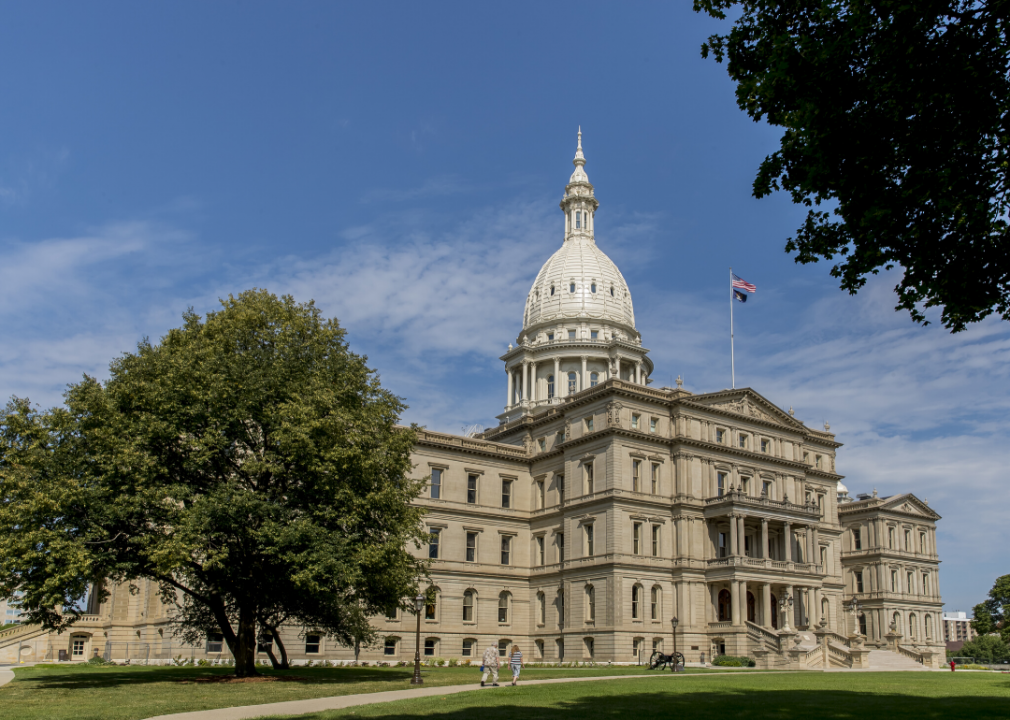
Action Sports Photography // Shutterstock
Cora Reynolds Anderson
Cora Reynolds is the first Native American to be elected to the House of Representatives in 1925. She was also the first woman to win a seat in the state of Michigan. She focused on public health issues and strongly campaigned for it.
[Pictured: Michigan state Capitol building.]
Bettmann // Getty Images
Patsy Mink
In 1964, Native Hawaiian Patsy Mink became the first non-white woman to win a seat in Congress. Mink fought hard for child daycare on behalf of low-income families and championed against the Vietnam War.
USGov // Wikimedia Commons
Carol Moseley Braun
Carol Moseley Braun became the first African American woman to be elected senator in 1992. She spoke out against sexual harassment as well as equality and affirmative action.
You may also like: Famous declassified government secrets

Popow/ullstein bild // Getty Images
Angela Merkel
Angela Merkel, who became Germany’s first woman chancellor in 2005, might be the most powerful woman in the country, but many view her as the true leader of the European Union. The chancellor also saved her nation from a damning recession and opened Germany to an influx of skilled workers.
John Klemmer // Wikipemedia Commons
Claire McCaskill
Claire McCaskill became the first female senator elected in Missouri in 2006. McCaskill was also the sponsor of a bill protecting sexual assault victims in the military, which unanimously passed in 2014, in an attempt to enforce military justice and give the victims a voice.
You may also like: How well do you remember 1969?
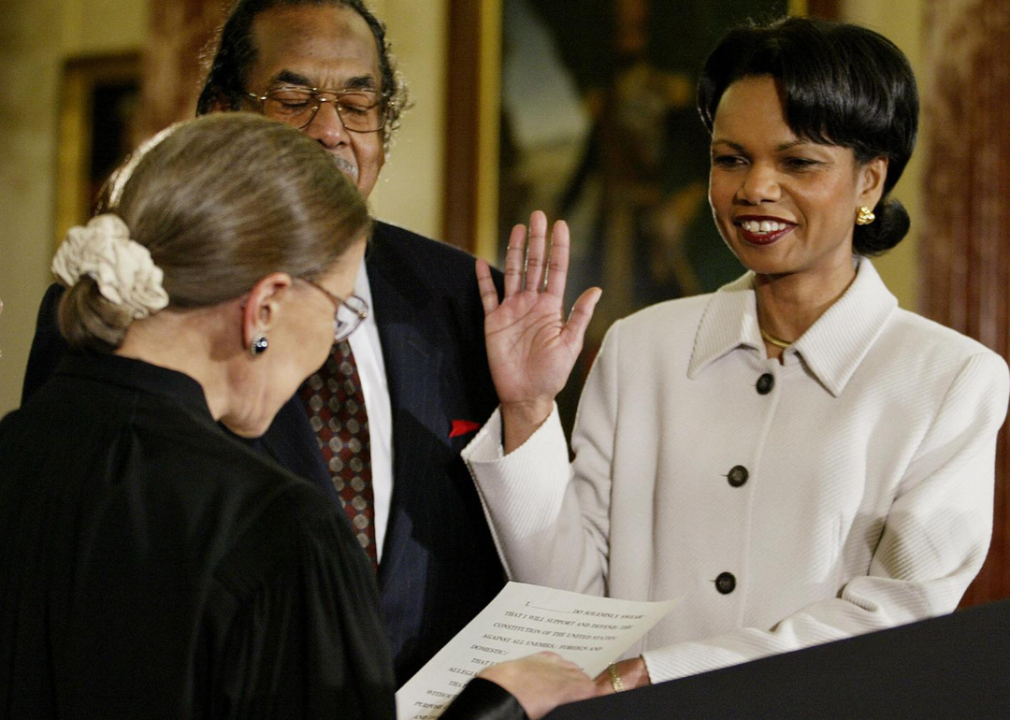
LUKE FRAZZA/AFP via Getty Images
Condoleezza Rice
Former Secretary of State Condoleezza Rice broke barriers when she became the first Black woman to hold the position in 2005. She was also the first Black woman to hold the post of national security adviser in 2000 when she joined George Bush’s administration, and previously the first Black woman to be appointed the provost of Stanford University in 1993. Rice is known for her accomplishments in both education and foreign affairs, working with George H.W. Bush on Soviet and East European affairs during the tumultuous fall of the Soviet Union and focusing on diplomacy in the Middle East during her tenure as secretary of state.
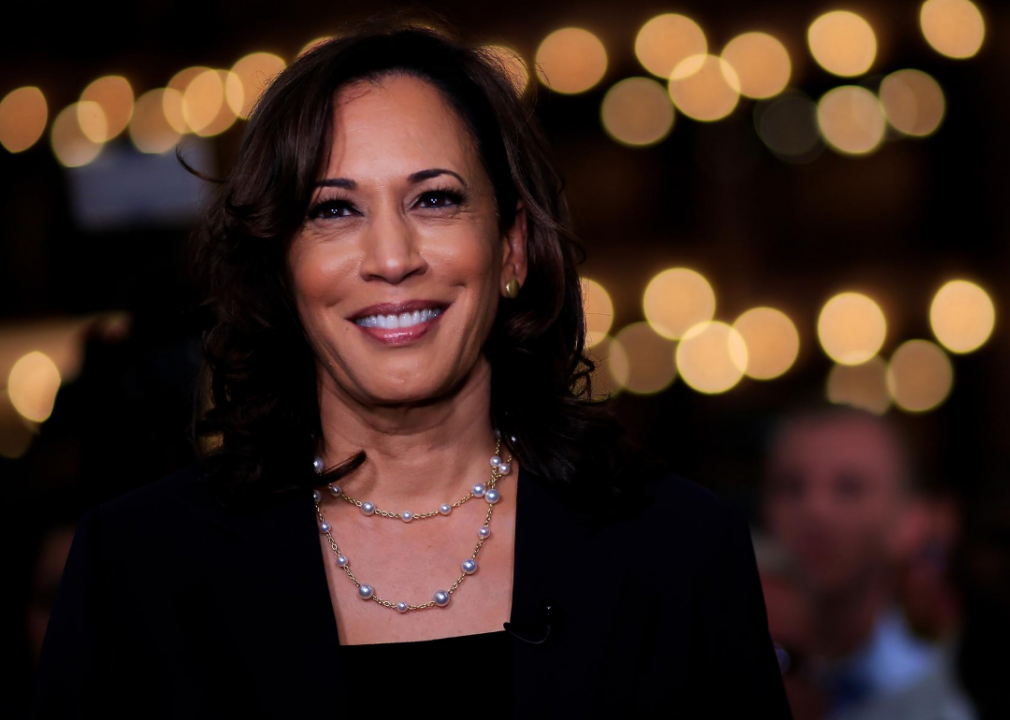
Cliff Hawkins // Getty Images
Kamala Harris
With the Aug. 11 announcement that Kamala Harris is Joe Biden’s running mate heading into the 2020 general election, she became the first Black woman and first South Asian woman to be the vice presidential nominee of a major U.S. political party. Harris has broken many barriers throughout her career, with the titles of U.S. senator, California attorney general, and San Francisco district attorney under her belt. She became well-known as a senator when she sharply questioned former Attorney General Jeff Sessions and Supreme Court Justice Brett Kavanaugh about Russia in separate hearings, and when she confronted Biden about his stance on busing during a presidential debate in 2019.
Harris broke even more barriers in 2021 when she became the first woman, the first South Asian American, and the first Black American to become vice president of the United States.

